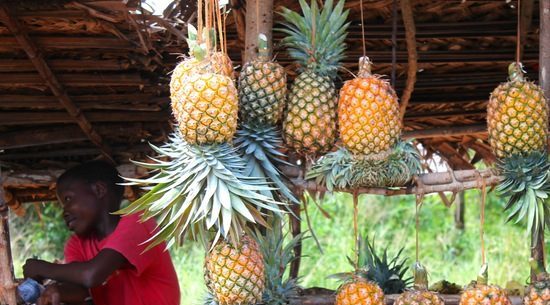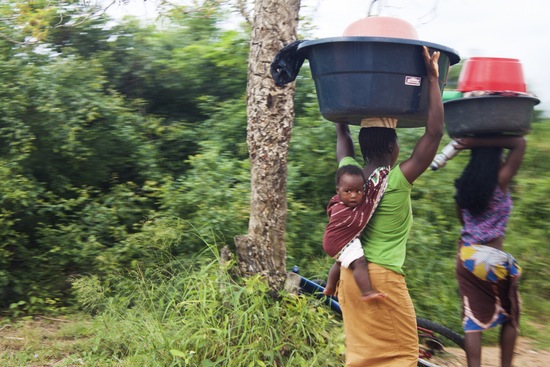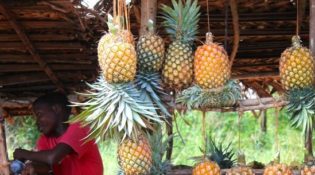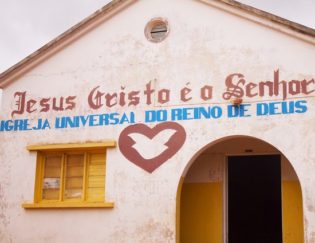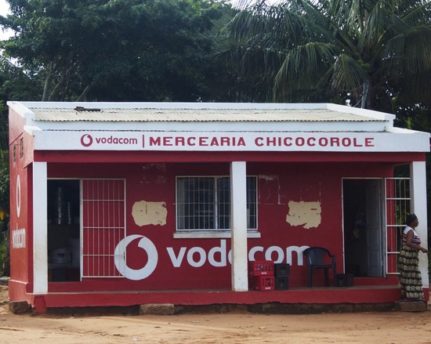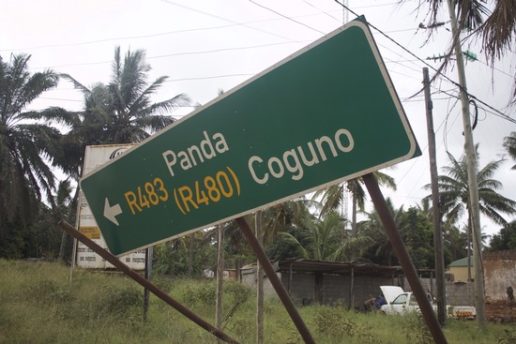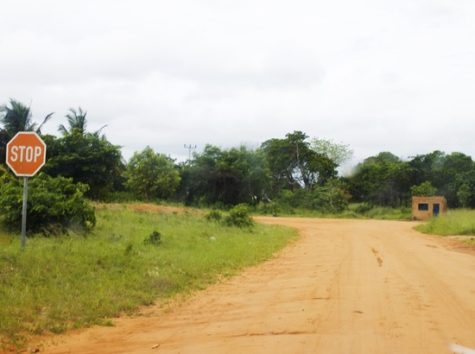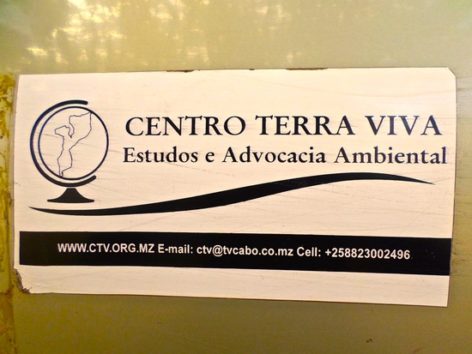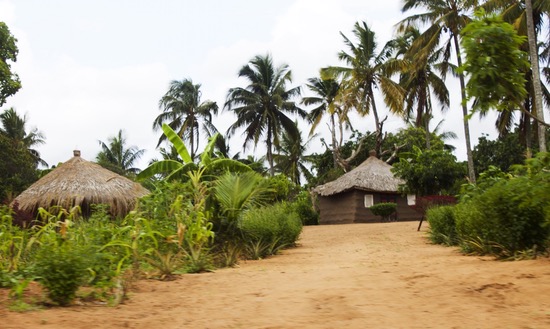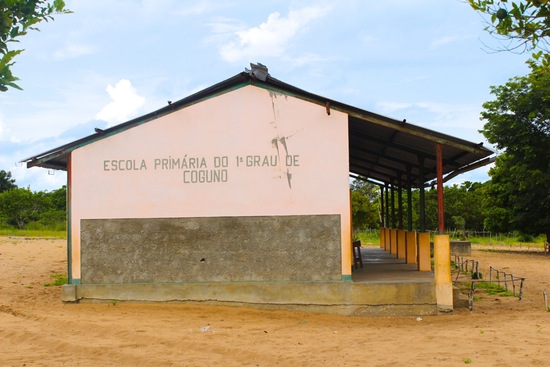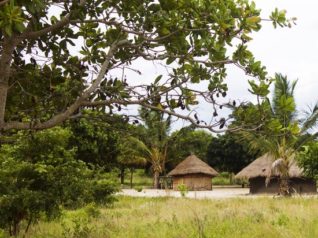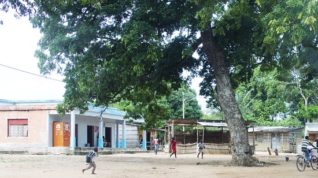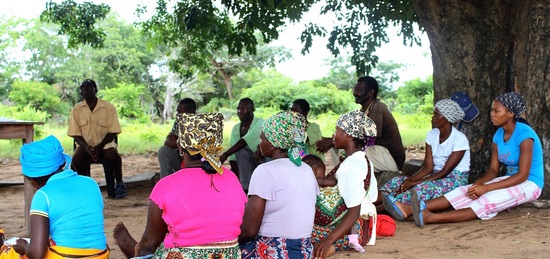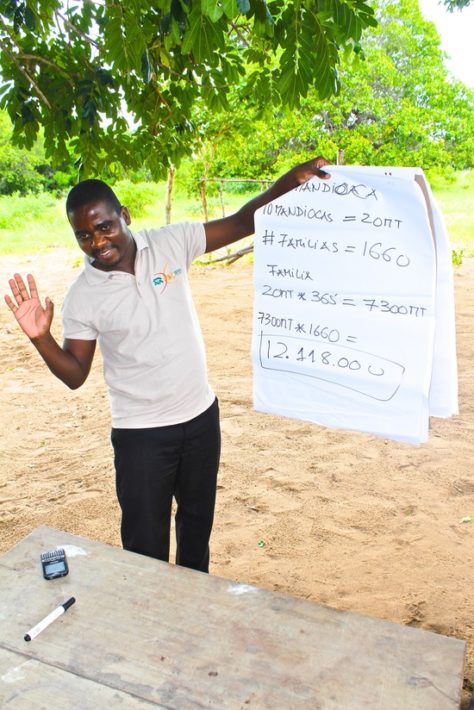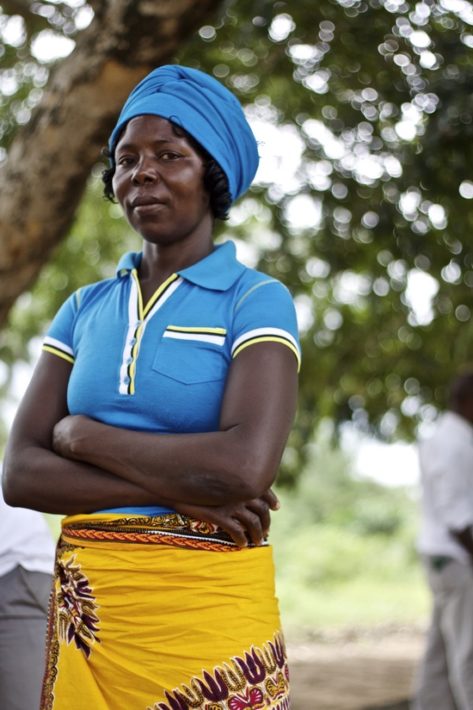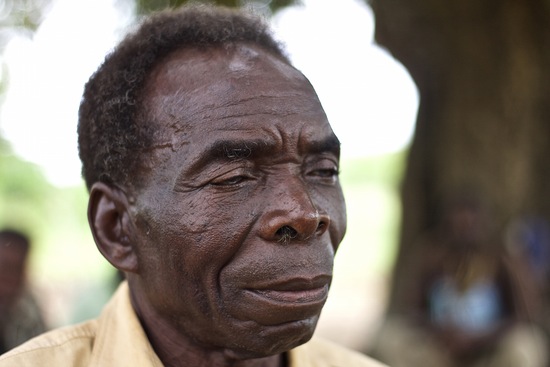Post
The Cassava Question
In Mozambique, people often tell you with some pride that they have the same highway that runs from the south of their enormous country, near the border with South Africa, all the way north to Tanzania. Once you’re outside the capital, Maputo, the EN1 is a quiet two-lane strip of tarmac fringed by palm trees, scattered houses and farm land. There are also regular roadside temptations for travelers – basic stalls and clustered sellers of mango and pineapples, cashews and roast pork-on-a-stick. For spiritual succor, there is usually a hand-decorated church every few miles, and there is always, always, somewhere to top-up your mobile phone.
Once you turn off the highway, you are faced with one of the iconic visuals of rural Africa – a red dirt road cutting through the greenery towards the horizon. I am traveling with colleagues from Namati’s Mozambican partner Centro Terra Viva. We cover two-hours of bone-rattling ruts, through countryside pulsing with natural beauty.
We are heading for the thriving community of Coguno, a sprawling patchwork of farmsteads and hamlets 60km from the highway. CTV is working with the people of Coguno to secure a ‘certificate of delimitation’ for the community’s land. In Mozambique all land is owned by the state, but the law allows individuals and communities to register their right to use and access the land. Registration offers important legal protection: CTV works with many communities who have lost part or all of their land to mining or tourism companies or to encroachment by powerful elites. And the problem is not just wealthy investors. Much encroachment on community land is simply by local individuals.
Applying for certificates of delimitation is just one of the steps in Namati’s process of helping communities to protect their land. In Mozambique, Liberia, Kenya, Uganda and Nepal, Namati and partners support rural communities to map their lands, settle boundary disputes, and establish local land governance mechanisms that are participatory and accountable. It is critical to motivate community members to commit the necessary time and effort to complete the process. One of the motivation tools developed by Namati is a participatory exercise that estimates the economic value generated by communities’ land and natural resources.
“For many rural people when an investor comes and says ‘I’ll give you 50,000MZN (US$1,500) it seems like a lot of money to them,” says Feliciano Chamo, coordinator of CTV’s land protection program, as we rumble past a stunning landscape pulsing with coconut, mango and corn. “But we have to help them understand how much value they already get from what they grow and gather on their community land and from other resources like streams and lakes – so that they really understand what it should cost an investor who wants to rent it from them.”
The value of the coconut alone is plain to see – from woven baskets to charcoal – its multiple uses are all around us. Some round rural homes are made entirely from reeds and palm, some use mud wedged between mango-wood trunks and, as we move deeper into the countryside, they start to outnumber concrete-block and tin-roof homes.
Coguno is big and stunningly beautiful. It takes over two hours to walk from some of the outlying hamlets to the center, where there is a vibrant market. It is home to around 1,660 multi-generational families who live in small settlements of woven palm or mud houses. They have already started the process of protecting their land by mapping and marking the boundaries of the communal land. A land and natural resources committee has also been elected and it is they who are waiting for us, under the meeting tree just past Coguno’s rather lovely, pink-stuccoed primary school. The chairs are reserved for us and the Regulo, the local traditional leader. The women, in their colorful capulana skirts are sitting on the ground with some of the men. But I’m told not to read too much into the custom of women giving up their seats to men. Their presence on the land committee is a sign of the importance of land rights to the empowerment of women.
The regulo, Castigo Jacobe Guambe, formally welcomes us and thanks CTV for its past work. Then Feliciano begins his presentation: “I want to talk with you about the resources that you have here on your land and work with you to count the resources of the village. I need you to tell me – what resources do you get from your community land?” He begins to record, on flip-chart paper, all the things that community members tell him that they gather and grow on their community land: cassava, rice, potatoes, cashews, corns, beans, coconuts, fish at some parts of the year… the list goes on.
“Do you eat cassava all year? How many cassava do you eat in a day?” asks Feliciano. “That’s not so easy to answer,” says one man, “you get big and small cassava – and my wife does the cooking!” But Feliciano persists and gets an average: 10 cassava roots a day for an average family, all year long. He does the same with each of the resources on the list.
Next come the sums. “How much to you pay for cassava at the market?” 20MZN for 10 cassava comes the answer. “So if they needed to buy their cassava instead of farm it, one family could spend 7,300MZN a year just on the cassava! Now multiply this by the 1,661 families in Coguno – together, you would need to spend 12,118,000MZN each year just for cassava, if you had no land to farm.”
Feliciano leads them through the same calculation for all they grow and gather from their land. Not just food, but building materials, fuel, and other resources. “Now do you see – if an investor comes and he wants to take your land and says ‘here have 50,000MZN’, will you still think ‘This is so much money’? You might think, ‘Let him have some hectares – we still have other land.’ But what happens when you no longer have the land to produce everything you need? You will discover that this small money is nothing when a single family needs 7,000MZN each year just to replace their cassava. This is why everyone needs to know the value of the community land.”
“There were times in the past when we did not know our rights and we did not know the value of our land,” says Regulo Guambe. “We gave away some parts of our forest thinking, ‘it is only forest’, but later we discovered we had lost many useful trees. CTV is opening our eyes and teaching us to defend ourselves.”
Rugulo Guambe is a dignified and serious man aged 71. He has lived his whole life in the community and can recall land disputes with neighboring communities that date back to the 1950s. “Since CTV started to hold meetings people have begun to wake up about the importance and value of the land,” says the Regulo. “We are starting to think about defending our land and resources. Instead of asking people to defend them for us, we have to defend them ourselves.”
.
Produced with the assistance of Centro Terra Viva
Photographs by Paul McCann and Anilo Chana Tanasse, ©2015 NAMATI

